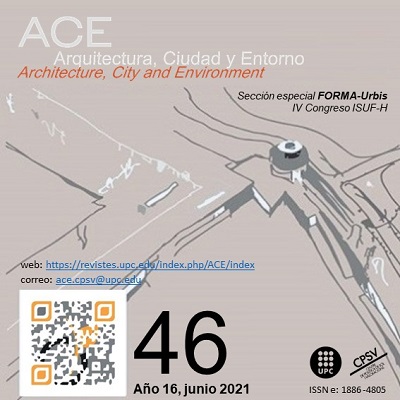The Shelters for Gender-Based Victims in Galicia and Asturias, Architectural Models of Home?
DOI:
https://doi.org/10.5821/ace.16.46.9703Keywords:
Housing facility, housing network, physical wellbeing, psychological wellbeingAbstract
In the 70s of the 20th century, the first shelters for victims of gender-based violence were set up in England, promoted by activists and feminist organizations. Over the time, they have been incorporated as an essential residential facility into the policy to fight against gender-based violence. Despite this, at least so far, Spain has not taken into account the adaptation of their architectural conditions to the double objective that they have to fulfill: protecting women from their aggressors, on one hand, and to provide them with support to overcome their harmful situation, on the other. According to this, the facilities have to provide security, as well as physical and psychological wellbeing, aspects that respond to spatial and formal characteristics that are yet to be defined. The article proposes to determine them from the homeness, a term that link the proper spatial qualities of a home with measurable architectural indicators, independent of the programme, the organization, the conceptual approach, and the housing type of the facility. The application of this set of indicators constitutes a method for the assessment, individual or compared, of any shelter by pointing out the spatial and formal requirements that are necessary for the setting up of any housing facility. In order to verify their suitability, they are applied to three examples that, located within the territorial scopes of the autonomous communities of Galicia and Asturias, represent the three existing forms of the shelters. The results prove the usefulness of the method, either as a diagnostic tool for already existing facilities or as a guide for an architectural project, ex novo or fitting-out works.
Downloads
Published
Issue
Section
License
| INTELECTUAL PROTECTION CRITERIA |
At this moment, it is count with the "Oficina Española de Patentes y Marcas", while global protection it is being processed by the World Intelectual Property Organization (OMPI/WIPO). Nevertheless the International Standard Serial Number Office (ISSN) has given the following numbers ISSN: 1886-4805 (electronic version) and 1887-7052 (paper version). All articles will be peer reviewed, using double blind reviewing. |
| COPYRIGHT |
The article contents and their comments are authors exclusive liability, and do not reflect necessarily the journal editor commitee's opinion. All ACE published works are subject to the following licence CC BY-NC-ND 3.0 ES http://creativecommons.org/licenses/by-nc-nd/3.0/es/ It implies that authors do not hold nor retain the copyright without restrictions but only those included in the licence. |


































